ubert Turtill shared a couple of things in common with the 'Originals'
All Black captain, Dave Gallaher; they were both born outside of New Zealand
and were All Blacks in 1905. But that was where the similarities ended.
Instead of playing an illustrious rugby career as an All Black, Turtill went on
to rebel against the NZRU after playing just one test and joined the 'dark side'
or 'Pro-Blacks' as some called them amongst other things. But despite being
virtually forgotten as a former All Black and often 'tacked on' as the 13th All
Black to die in WWI, Turtill regained recognition as a formidable athlete and
then as a battle-hardened soldier who almost survived the war. Hubert was born in Mile End, London in 1880. When he was just four years old, his parents sailed to New Zealand for reasons unknown. His nickname, 'Jum', was bestowed on him while he was on the trip. As a child he was somewhat plump and Jum came from the common nickname for an elephant, Jumbo. But Turtill soon shed his baby fat and as a footballer had a fine, athletic build. A capable fullback in the first decade of the 20th century for his Canterbury club, Turtill played 18 matches between 1902 and 1905 - quite possibly alongside fellow 'First XIII' All Black, Eric Harper, who was later to join the 'Originals' team and die in Palestine only 21 days after Turtill was killed. Hubert was also in the South Island side in each of the 1903 and 1907 seasons. After appearing for a combined Canterbury and South Canterbury selection against the touring Australians in 1905 Turtill was included in the New Zealand team for the only international in Dunedin. Though New Zealand's leading players were by this time on their way to Britain for what became celebrated as the "Originals" tour, the match in Dunedin has always carried full test status. Despite being heavily depleted the New Zealanders beat Australia in that match 14-5. Turtill, who had been considered unlucky not to have made the British tour, was one of New Zealand's best players against Australia, but that was to be his only All Black match. After the 1907 interisland match he joined what was to be known as the "All Golds," on their trailblazing and historic tour of Britain. Officially known as the Professional All Blacks, the team was dubbed 'All Golds' by an Australian journalist, in a derogatory sense at first, but the name stuck and now appears as an honourable entry in the annals of rugby league football. The tour started in Australia when the All Golds played under rugby union rules and won three matches against New South Wales. The England leg of the tour comprised 35 matches in almost five months. Turtill played in five of the internationals in Britain and then in 1908 played, as captain, against Australia. It remains, after 100 years, one of the most, if not the most audacious and spectacularly successful pioneering sporting adventures of any New Zealand sports team. Turtill embraced a game most of them had never seen, let alone play. He set out not even being familiar with the rules. At the end of his 49-match, 10-months tour he had test series wins over both Great Britain and Australia and earned the right to regard himself as being a part of the first world champions in the fledging code to become known as rugby league. If the venture had failed, all those involved faced the certainty of having their sporting careers ended in disgrace and vilification. All 28, including the contingent of eight amateur All Blacks, four of them famed 1905-06 'Originals', were banned for life by a vengeful and in damage control New Zealand Rugby Union, from ever participating again in rugby union at all levels, and all went to their grave with that stigma still attached. Despite the NZRU's strenuous efforts, the centennial rugby league 440-page book, The Kiwis 100 Years of International Rugby League, released earlier in April this year, reports that 18 members of the 'Originals' applied to Albert Baskerville (the NZ 'father' of international rugby league), to go back to England and 140, of the then 400 first class union players in New Zealand, expressed an interest in a game none of them had ever seen. Newspaper Editorials were scathing and in total support of an amateur game. Wellington's Evening Post referred to 'the pro Blacks - a contingent of the New Zealand professional footballers - are to sail for Australia, where they are to engage in combat with other leopards who have changed their spots'. Yet it was the tour of the Originals that hastened the introduction of league into both New Zealand and Australia. True they had established New Zealand as a rugby union force with their imperious march through Britain, causing much pride and excitement in their homeland. In reality, England had not recovered from losing Yorkshire and Lancashire to Northern Union, the dominant counties at the time of the great schism of 10 years earlier. The All Blacks only encountered real opposition in Wales. The Originals had generated 13,000 pounds for the NZRU - yet many came back penniless, out of work and very disenchanted with their financial treatment. Why else would 18 of them apply to go back with Baskerville? That only four of them were selected was due to a number of reasons, not the least being some could not afford the 50 pounds deposit, lineout leapers were not required and forwards had to be more mobile than was often the case in rugby union. In all eight All Blacks were in the team. Smith, Johnston, McGregor and Mackrell were the rugby union Originals who returned to England and the other four All Blacks were Wrigley, Cross, Watkins and Hubert 'Jum' Turtill. On the way home from the UK, the All Golds stopped off in Australia, in April/May/June, for a 10 match schedule including three tests against Australia. Sadly, Baskerville caught pneumonia in Brisbane on the final leg of the tour and died in hospital on 20 May 1907, at just 25 years of age. Six of his teammates brought his body back to Wellington where he was buried. Before the All Golds dispersed a benefit match for his widowed mother was played at Athletic Park on 13 June, 1908, before a crowd of 8000 interested spectators among them a number of officials from the New Zealand and Wellington Rugby Unions. His mother received 300 pounds from the game. Thus played was the very first game of rugby league in New Zealand. These Professional All Blacks were too successful, because within two years 11 of them were in England playing for professional clubs. One was Turtill, who in 1909 returned to England, his country of birth, with his wife, Mabel Edith (nee Hancock) formerly of Christchurch and his young son Alan. There he joined the famous Lancashire club, St Helen's, for whom he played until the outbreak of World War I. His profession was listed as a Hardware Merchant's employee/licensee. Being a Lancashire lad now, Turtill wasted no time in heading off to fight the Germans. It's clear that owing to him having two service numbers, the first being T6959 and the second being 426516, he was part of the early Territorial Force (TF) Field Company - the 422nd Coy who in November 1915 was merged into the 55th 2nd West Lancashire Division. Turtill was a Royal Engineer. The RE's were responsible for all manner of technical support such as establishing coordinates for ground fire, delivering chemical warfare, underground mining and transport infrastructure. It's likely that Turtill fought in France as early as October 1915 before the formation of the 55th Division in November 1915 when his service number was changed to 426516. The 55th Division saw action at Hellencourt and Bretencourt, before the 1st battle of the Somme took place. Names like Guillemont, Ginchy, Ribemont, Flers-Courcelette and Morval became home for Turtill while he struggled to exist in the muddy trenches. Then in 1917 he travelled up to the Ypres salient where he'd remain for most of the first half the year and had a comparatively quiet time, if being surrounded by enemy on three sides and under constant artillery fire could be described as quiet. After somehow surviving the battles of Pilkem Ridge and Menin Road Ridge, Turtill was relieved by the 39th Division and travelled south to an area near Cambrai where he would witness a massive tank attack by the Germans. It was now 30th November 1917. The British practically melted away in the onslaught and Turtill was removed for further training at Bomy, near Fruges. In February 1918, Turtill's 55th Division relieved the 42nd (East Lancashire's) in the front line at Givenchy and Festubert. Here he faced numerous strong enemy raids in March. Early April was much quieter: it was the calm before storm - the great German spring offensive! The Battle of Estaires and the defence of Givenchy began on 9th April. All we know about Turtill is that he was killed by shrapnel from a shell burst - probably instantly. He was 38 years old. The Defence of Givenchy was to become the single most famous action that the Division fought. "It was afterwards publicly stated by an officer of the German General Staff that the stand made by the Division on April 9th and the days which followed marked the final ruination of the supreme German effort of 1918". Hubert Turtill is buried at Brown's Road Cemetery, near Festubert, France. His wife and son soon moved back to New Zealand. His son, Alan, lost his life in WW2 in Libya, North Africa aged 32. He was a Captain with the 21st Battalion New Zealand Infantry. His father would have been no doubt very proud of him as would his son been of his father. IF YOU HAVE ANY ADDITIONAL INFORMATION ABOUT HUBERT TURTILL, PLEASE CONTACT US AT info@nixonpictures.co.nz All Black statistics courtesy of the NZ Rugby Museum: |
Video, Television, Corporate, DVD Production and Filming. Based in Auckland, New
Zealand. From concept planning to filming to final output. Over 10 years experience. |
© 2001 Nixon Pictures. Site built & managed by Nixon Pictures. |
solo worldwide |
format required |
rates |
camera operator |
Find out what we're doing or about to do... |

L.B.I.P.P Qualified |
Award Winning |
Nixon Pictures chooses to use Rocket Rentals. |
View online a selection of video clips. |
NEWS |
We have just returned from Western Australia on a 2-week Gone Fishin' shoot. The
team visited Perth, Exmouth and Broome. |
2001 - Best Documentary 2001 - Best Script 2005 - AVA Silver medal |
Documentary making is our passion. Be it a personal ambition or part of someone
else's desire to tell the world their story - we will listen, shoot and give it
all the attention it deserves. Bruce Nixon |
Click to download a PDF version of our CV. |
Experienced & pleasant |
Competitive & flexible |
Able to provide any |
Can direct & operate |
Based in New Zealand |
'All Blacks At War: The First XIII' |
Serial Number T6959 & 426516 Died Tuesday, 9 April 1918, Bethune, France. Age 38 Grave Brown's Road Cemetery, Festubert, Pas de Calais, France. REF: V. D. 6. |
HUBERT 'JUM' TURTILL Born 1 February 1880 in Mile End, London. Parents Unknown. Education Unknown. Physical Unknown Province Canterburyi Rugby Club First made All Blacks from Christchurch. AB# 139 Position Fullback All Black Debut 2 September 1905 v Australia, Dunedin aged 25 International Debut 2 September 1905 v Australia, Dunedin aged 25. Last Test 2 September 1905 v Australia, Dunedin aged 25 Rank Sergeant 422 Field Company, Royal Engineers, 55th - 57th West Lancashire Div, British Forces |
The All Black Games that Turtill played. (+) = substitute; (-) = replaced |
1905 2 Sep vs Australia at Dunedin 14-3 |
Points scored for the All Blacks Turtill did not score any points for the All Blacks. Test Record by Nation Australia Totals |
P W D L t c p dg
pts |
1 1 - -1 - -
- - - 1 1 0 0 0 0 0 0 0 |
H |
Hubert Turtill, All Black 1905 |
Hubert Turtill, All Gold 1907 |
Australian All Blues Team 1907 |
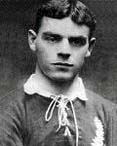
The 'Father of Rugby League' Albert Baskerville 1907 |
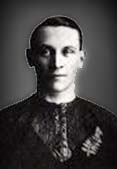
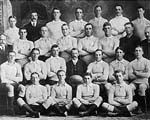
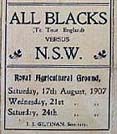
One of the controversial match programmes |
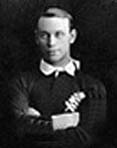
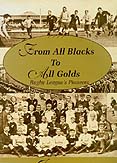
From All Blacks to All Golds |
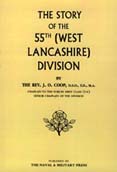
A written history of the 55th Division |
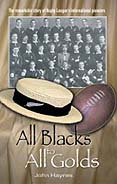
A written history of the All Golds |
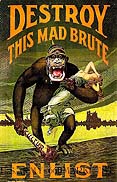
An early enlistment poster |
Brown's Road Cemetery, France |
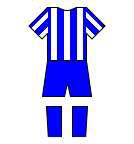
Early St Helen's RLC Uniform |

A Royal Engineers Group, France |
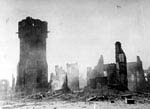
Bethune Ruins, France |
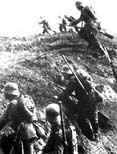
German Spring Offensive 1918 |
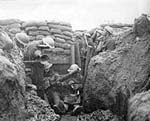
The calm before the storm, 1918 |

The Glorious Dead, Estaires, France |
Or visit another of the 'First XIII' |
BACK TO MAIN MENU |